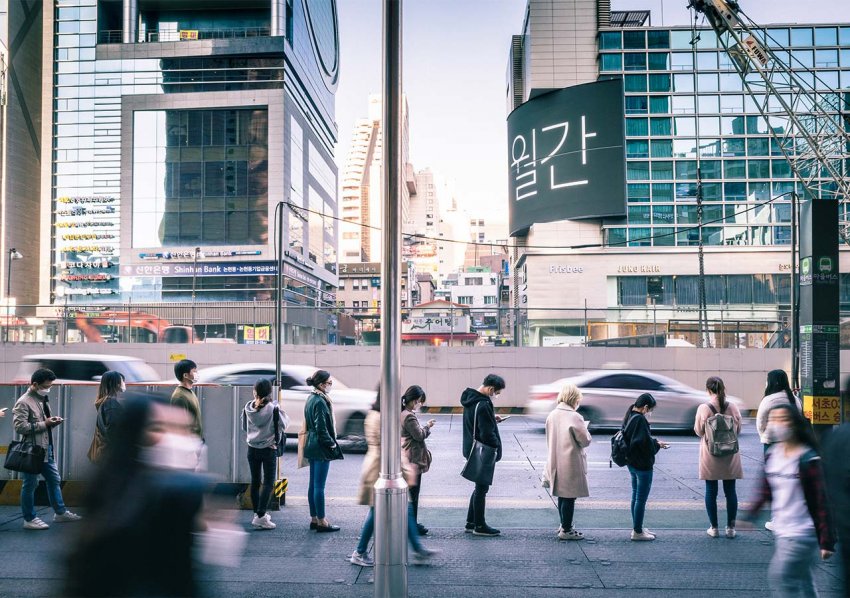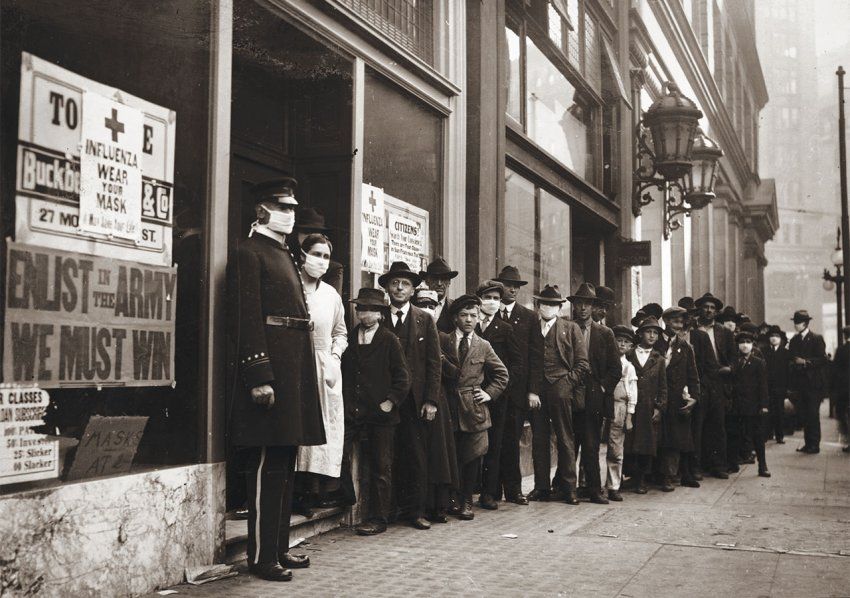The Case for COVID Mask-Wearing
"SARS-CoV-2 has the protean ability to cause myriad clinical manifestations, ranging from a complete lack of symptoms to pneumonia, acute respiratory distress syndrome, and death. Recent virologic, epidemiologic, and ecologic data have led to the hypothesis that facial masking may also reduce the severity of disease among people who do become infected. This possibility is consistent with a long-standing theory of viral pathogenesis, which holds that the severity of disease is proportionate to the viral inoculum received. Since 1938, researchers have explored, primarily in animal models, the concept of the lethal dose of a virus — or the dose at which 50% of exposed hosts die (LD50). With viral infections in which host immune responses play a predominant role in viral pathogenesis, such as SARS-CoV-2, high doses of viral inoculum can overwhelm and dysregulate innate immune defenses, increasing the severity of disease. Indeed, down-regulating immunopathology is one mechanism by which dexamethasone improves outcomes in severe Covid-19 infection. As proof of concept of viral inocula influencing disease manifestations, higher doses of administered virus led to more severe manifestations of Covid-19 in a Syrian hamster model of SARS-CoV-2 infection."Monica Gandhi, M.D., M.P.H., George W. Rutherford, M.D. The New England Journal of Medicine
 |
| Law enforcement trainees wearing protective face masks as they take notes while being trained on how to handle civil disputes during class at San Bernardino County Sheriff’s Frank Bland Regional Training Center in San Bernardino on Wednesday, July 29, 2020. (Photo by Watchara Phomicinda, The Press-Enterprise/SCNG) |
"If facial coverings decrease the amount of virus a person is infected with, they can provide a way of tilting towards infections that result in minimal or no symptoms, yet induce some degree of immunity."Dr. Amesh Adalja, infectious disease expert, senior scholar, Johns Hopkins Center for Health Security, Baltimore"If this theory bears out, population-wide masking, with any type of mask that increases acceptability and adherence, might contribute to increasing the proportion of SARS-CoV-2 infections that are asymptomatic."Dr. Monica Gandhi, Dr. George Rutherford, University of California, San Francisco"Covering mouths and noses with filtering materials serves 2 purposes: personal protection against inhalation of harmful pathogens and particulates, and source control to prevent exposing others to infectious microbes that may be expelled during respiration. When asked to wear face coverings, many people think in terms of personal protection. But face coverings are also widely and routinely used as source control. For instance, if given the choice between having surgery performed by a team not wearing some covering over their mouths and noses vs a team that does, almost all patients would reject the former. This option seems absurd because it is known that use of face coverings under these circumstances reduces the risk of surgical site infection caused by microbes generated during the surgical team’s conversations or breathing. Face coverings do the same in blocking transmission of SARS-CoV-2."John T.Brooks, M.D., Jay C.Butler, M.D., Robert R.Redfield, M.D. Jama
Masks -- the public is informed by authorities urging the use of facial coverings in this time of SARS-
CoV-2 disease roiling the world order -- are essential to protect others in the event you harbour the virus and have not displayed symptoms of COVID-19. There is also, health experts inform us, a good measure of protection for the mask-wearer from contracting the virus. On the other hand, a recent paper reflecting research published in The New England Journal of Medicine posits that mask wearing may have another residual and very important outcome.
CoV-2 disease roiling the world order -- are essential to protect others in the event you harbour the virus and have not displayed symptoms of COVID-19. There is also, health experts inform us, a good measure of protection for the mask-wearer from contracting the virus. On the other hand, a recent paper reflecting research published in The New England Journal of Medicine posits that mask wearing may have another residual and very important outcome.
Within
communities where infection is widespread and many have yet to be
diagnosed while shedding infectious droplets, mask-wearing which cannot
entirely prevent some degree of infection penetration, by allowing a
small amount of the virus to infect in essence acts as a vaccine.
Allowing one's immune system to respond to trace amounts of infection
without becoming overwhelmed by a large dose of infection. This is
called variolation and its effect on a broad scale is to produce a kind
of community 'herd effect'.
Masks,
by limiting the amount of viral particles reaching tissues of those
newly infected are then serving to inoculate more than massively
infecting. In virology, the authors of this new paper explain, there is a
tradition called the "LD-50" of a virus; the amount of an infection
scaled to body mass that will produce great harm to those exposed to a
full load. Viral disease toxicity may be dependent on "dose"; the lesser
the dose the lesser the damage, enhancing opportunity for the body's
immune system to adapt and fight the intruder.
Verification
through research and observation appears as indirect evidence that
SARS-CoV-2 doses if moderated through the preventive use of masks could
produce a far less harmful outcome. A Japanese-led study that found "higher
doses of administered virus led to more severe manifestations of
COVID-19 in a Syrian hamster model of SARS-CoV-2 infection", appears to bear out the two authors' contentions.
 | ||
| Mask-wearing is now the norm in South Korea.Photo: Wonseok Jang |
Countries
practising high-masking compliance are seen to have considerably lower
rates of severe COVID-19 and consequent death numbers while resulting in
fewer hospital admissions. The authors suggest that since being taken
up as a first line of defence, (social isolation and mask-wearing), the result has been a mass protocol of "mask variolation".
The original method of vaccination where fluids from smallpox patients
were collected, to expose the non-infected to harmless amounts of
diseased matter to induce mild infection providing immunity; hence
variolation.
Health
authorities early in the first wave of COVID believed that
non-symptomatic people would not significantly shed as an infection
source, until experience proved otherwise and then there arose an
urgency to cope with the reality that asymptomatic carriers of the virus
were indeed shedding infectious particles to the same degree as those
infected with the virus who exhibited a wide range of symptoms.
The
message that the latest published research is delivering is that the
eventual agreement that mask-wearing represented an integral approach to
prevention ended up making far more of an impression in avoidance than
might have been anticipated. The wearing of masks has proven successful
in shielding the wearer from heavy infection doses, while the small
amount of viral infection that did penetrate the shields has proven to
have far-reaching consequences in making the wider public less
susceptible to serious infections requiring hospitalization, while
serving to reduce the death rate.
 |
| A line of people on Montgomery Street in San Francisco waits to get masks during the 1918 flu pandemic. Failure to wear a mask was punishable by imprisonment or a fine. Photo courtesy of the California History Room, California State Library, Sacramento. |
Labels: COVID-19, Face Masks, INfection Rate, Research, SARS-CoV-2, Variolation, Virus

<< Home